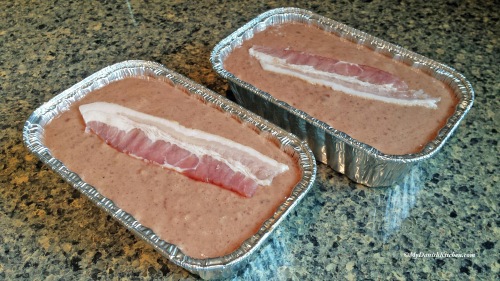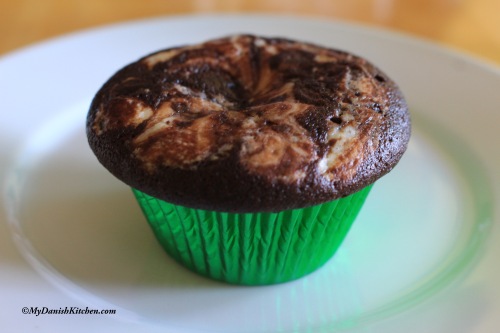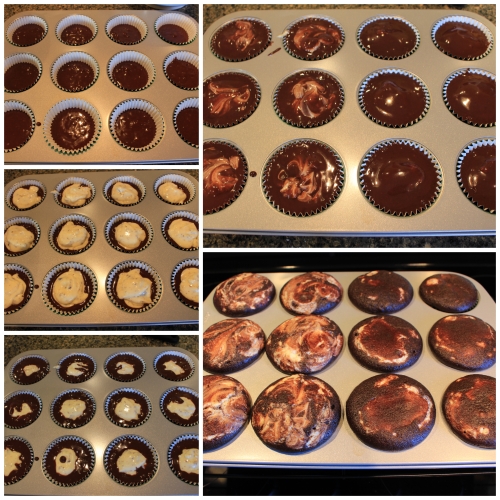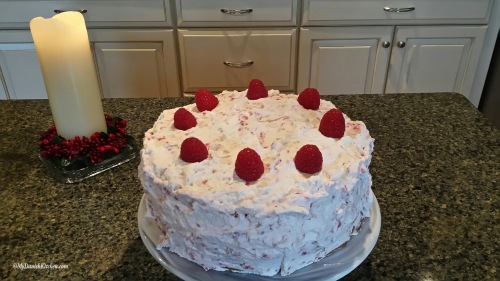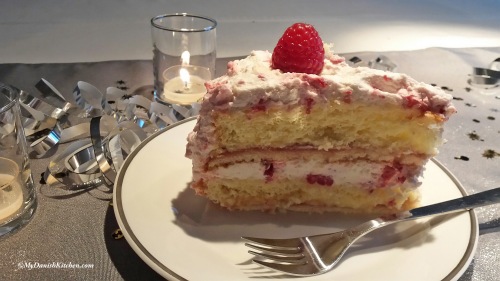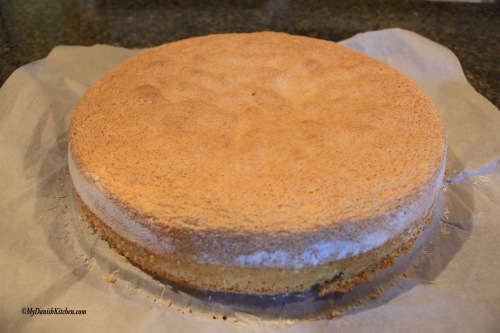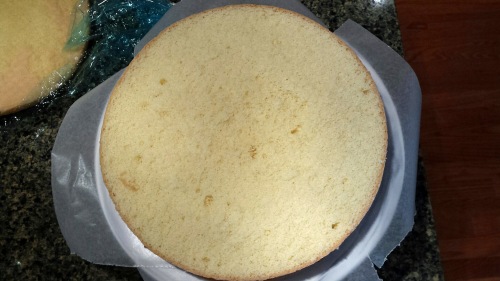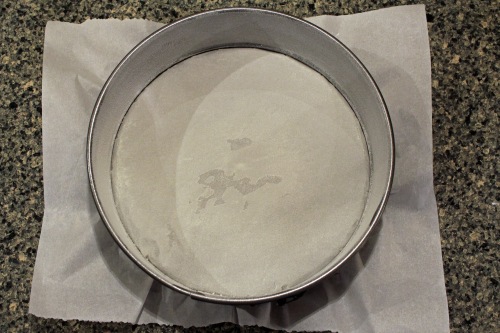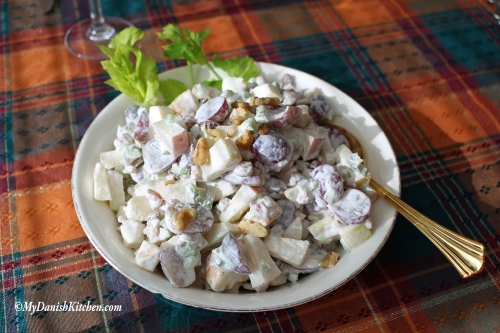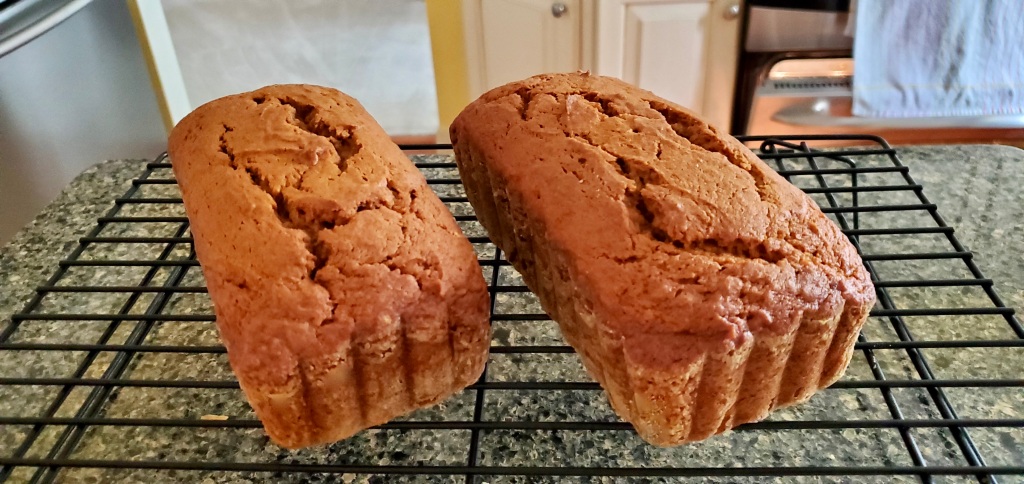
When the air turns cool and Fall is in the air, you know what time it is. It’s anything Pumpkin time. I came across this recipe, tried it out and just had to share it with you. It’s very delicious, light and soft in texture, not heavy and dense like some recipes.
The size loaf pans (8 x 4 inch) used in this recipe is not a size that I have (mine are 9 x 5 in). You could just watch the baking time closely or you could buy some 8 x 4 inch foil pans at the grocery store, which is what I did, and it worked out perfectly.
Pumpkin bread freezes really, well up to circa 3 months. Just thaw in the refrigerator overnight before serving. Since this makes two loaves, I brought one loaf into work and the other I sliced up and placed a piece of waxed (or parchment) paper in-between slices and wrapped all of it up good before placing in freezer. That way I can just pull out however many slices I want to thaw and 15 sec in the microwave will give you a warm, delicious slice of Pumpkin bread to enjoy.
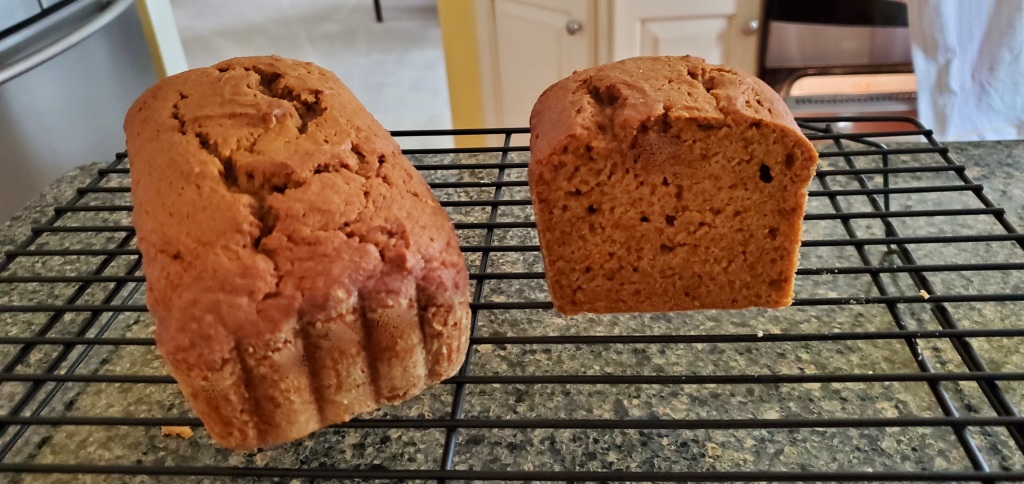
Pumpkin Bread, make 2 loaves
Ingredients:
2 cups all-purpose flour (260 grams)
1/2 tsp salt
1 tsp baking soda
1/2 tsp baking powder
1 tsp ground cloves
1 tsp ground cinnamon
1 tsp ground nutmeg
1 1/2 stick unsalted butter (170 grams), room temperature
2 cups sugar (420 grams)
2 large eggs
1 (15 oz) can pumpkin puree (Libby’s) (425 grams)
Directions:
Preheat oven to 325 degrees F (163 degrees C). Grease and lightly flour two 8 x 4-inch loaf pans (20 x 10 cm), set aside.
Combine dry ingredients in a bowl (flour, salt, baking soda, baking powder, cloves, cinnamon and nutmeg), set aside. In a large bowl using an electric mixer beat softened butter and sugar until blended. Add eggs one at the time and beat until smooth and fluffy. Add pumpkin and beat until incorporated, it may look grainy which is ok. Add flour mixture in 2-3 increments and mix on low speed until incorporated.
Divide batter evenly and pour into prepared loaf pans. Bake 65-75 minutes or until inserted toothpick comes out clean. Let loaves cool in pans for 10 minutes before turning out onto baking rack to cool completely.
Source: Once Upon a Chef

